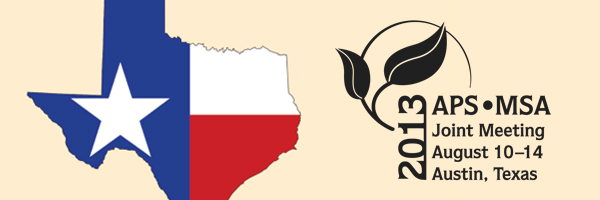APS Homepage
Back

Poster Session: Phylloplane and Rhizosphere Ecology
© 2013 by The American
Phytopathological Society. All rights reserved.
505-P
Persistent effects of wildfire on foliar endophytes of Quercus hypoleucoides and Juniperus deppeana in southeastern Arizona.
Y. L. HUANG (1), M. M. Devan (1), S. H. Furr (1), A. E. Arnold (1)
(1) School of Plant Sciences, The University of Arizona, Tucson, AZ, U.S.A.
Trees in fire-adapted ecosystems form intimate symbioses with endophytic fungi that inhabit healthy leaves and stems. How these symbionts respond to major wildfires has not been studied previously. Using a patchwork of burned and unburned areas of otherwise contiguous coniferous forest in southeastern Arizona, we examined endophytes in regrowth of trees that burned in a large wildfire in 2005 vs. those in neighboring, conspecific trees that never burned. Fresh foliage of 24 mature individuals of Quercus hypoleucoides and Juniperus deppeana was collected in early 2011 and 2013. The importance of burn status, microsite, host species, and relevant interaction terms was evaluated. Isolation frequency differed significantly only among microsites, and diversity differed only between host species; neither differed as a function of burn status nor varied directly with leaf water content (both species) or indices of plant health (evaluated only for Q. hypoleucoides). Both leaf chemistry and endophyte community structure for each species differed as a function of burn status in 2011, revealing detectable traces of fire history ca. 5 years after the wildfire; however, sampling in 2013 did not find such differences. Comparison with regional datasets revealed that burned and unburned trees are inhabited by distinct subsets of the larger mycoflora of the Sky Island biological zone, some of which may be especially suited to survival or colonization after fire.